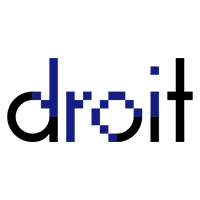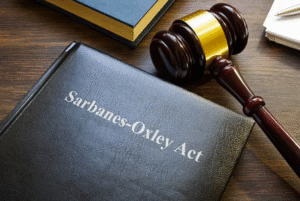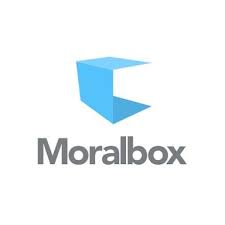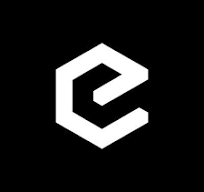Next-Gen Governance Tools Signal a Shift in Corporate Power Dynamics
A Boardroom on the Edge
On February 21, 2024, ransomware hit UnitedHealth Group’s Change Healthcare and forced the company to shut down its entire network. Payment processing stopped. Electronic health records went offline. The company paid a $22 million ransom, and recovery took months. The breach exposed data on 192.7 million individuals, the largest healthcare data breach on record. The incident highlighted a critical vulnerability: when corporate IT fails, boards lose the governance tools needed to manage the crisis.
Change Healthcare was not alone in 2024. McLaren Health Care’s 13-hospital network rescheduled surgeries and asked patients to bring handwritten medication lists. Seattle-Tacoma International Airport lost baggage systems for two weeks. Cleveland’s city government shut down for 11 days. According to CyberArk research, nearly 90% of organizations were targeted by ransomware in 2024.
The operational paralysis raises a board governance question: when ransomware encrypts corporate IT systems, how do directors maintain secure communication for crisis response? Directors who need to convene emergency sessions, approve incident response budgets, and meet SEC’s four-day breach disclosure requirement face a problem. The tools they typically rely on are the same systems attackers just disabled.
Boards using external platforms maintain an alternate channel. Nasdaq Boardvantage operates outside corporate IT infrastructure, preserving secure communication even when internal systems fail. Companies combine this with Workiva for ESG disclosure and LogicGate for remediation workflows. These independent platforms increasingly determine whether boards can function during crises.
Why Investors and Boards are Spending
According to Grand View Research, the global enterprise governance, risk, and compliance market was valued at $62.92 billion in 2024 and is projected to reach $134.86 billion by 2030, growing at 13.2% annually. The ESG segment alone accounted for over 30% of 2024 revenue.
Among large enterprises, 36% of boards now use AI governance frameworks for compliance and risk oversight, up from 21% five years ago. Surveys show 80% of institutional asset managers view ESG reporting as material to investment decisions. Boards buy platforms to compress the signal-to-action cycle. SEC rules require material cyber incident disclosure within four business days. Companies without resilient governance infrastructure struggle to meet that deadline when attacks disable communication systems.
A New Power Map in the Boardroom
Data officers, ESG analysts, and compliance leads moved to the front of board discussions. Real-time dashboards replaced retrospective reports. Directors began receiving continuous feeds of verified metrics, increasing demand for auditable answers. They started asking: who validates this data, who audits the algorithms, who owns remediation when feeds show errors?
Digital engagement portals allow shareholders to access the same verified metrics directors see. Proxy campaigns that once relied on information asymmetry lost their surprise advantage. The shift created a new director skill requirement. Boards need members who understand data provenance, model validation, and algorithmic bias.
The Trade Offs and the New Liabilities
Governance platforms hold board communications, strategic documents, and voting records. These are high-value targets. A successful breach exposes board deliberations and competitive strategy.
According to Gartner research, organizations face significant challenges with pricing transparency and capability assessment when selecting GRC tools. Only a minority of boards routinely discuss AI risk or algorithmic validation. Data quality issues and integration errors can produce dashboards that look authoritative but reflect flawed inputs.
Industry observers note governance software presents steep learning curves requiring dedicated training. Limited customization flexibility means organizations with unique workflows may struggle to adapt tools. Several platform reviews cite synchronization issues and constraints on agenda customization.
What Winners Do Differently
Top-performing boards treat governance tools as programs requiring continuous management. They set measurable KPIs: time to anomaly detection, reduction in audit discrepancies, investor engagement response rates. They budget for ongoing validation and independent ESG assurance.
Winners sequence their adoption. They start with core board management to establish secure communication, then layer on compliance automation, then add real-time risk monitoring. They maintain governance over governance, establishing clear policies for platform access, data retention, model validation, and incident response.
Recent developments underscore this evolution. In April 2024, LogicGate unveiled its AI Governance Solution. In September 2024, Oracle introduced its Financial Crime and Compliance Management Monitor Cloud Service. In October 2024, Thomson Reuters acquired Materia, an AI-driven startup specializing in tax and audit automation.
Bottom Line
Governance tools are redistributing power inside companies. Platforms like Nasdaq Boardvantage, Workiva, and LogicGate provide crisis-resilient oversight, secure decision-making, and continuous reporting.
But adoption without sophistication creates new risks. Organizations face challenges with tool complexity, customization constraints, and the need for specialized expertise. Boards that use governance tools strategically with proper training, independent validation, and realistic assessment of limitations gain faster decisions, lower advisory costs, higher investor confidence, and the ability to function when corporate IT fails.
As the eGRC market approaches $135 billion by 2030, the question is no longer whether boards will adopt these tools, but whether they’ll deploy them with the rigor that transforms technology into genuine competitive advantage.





